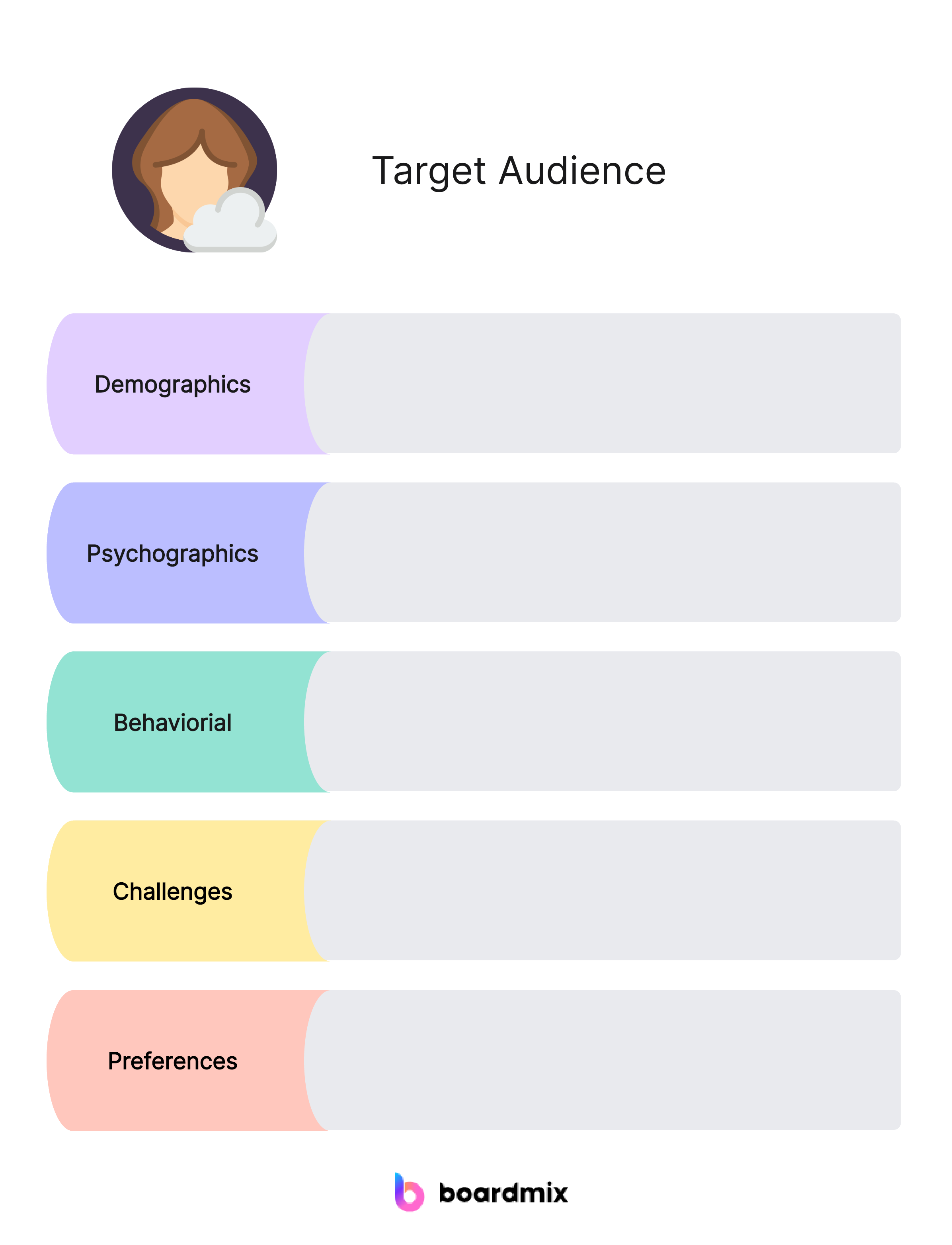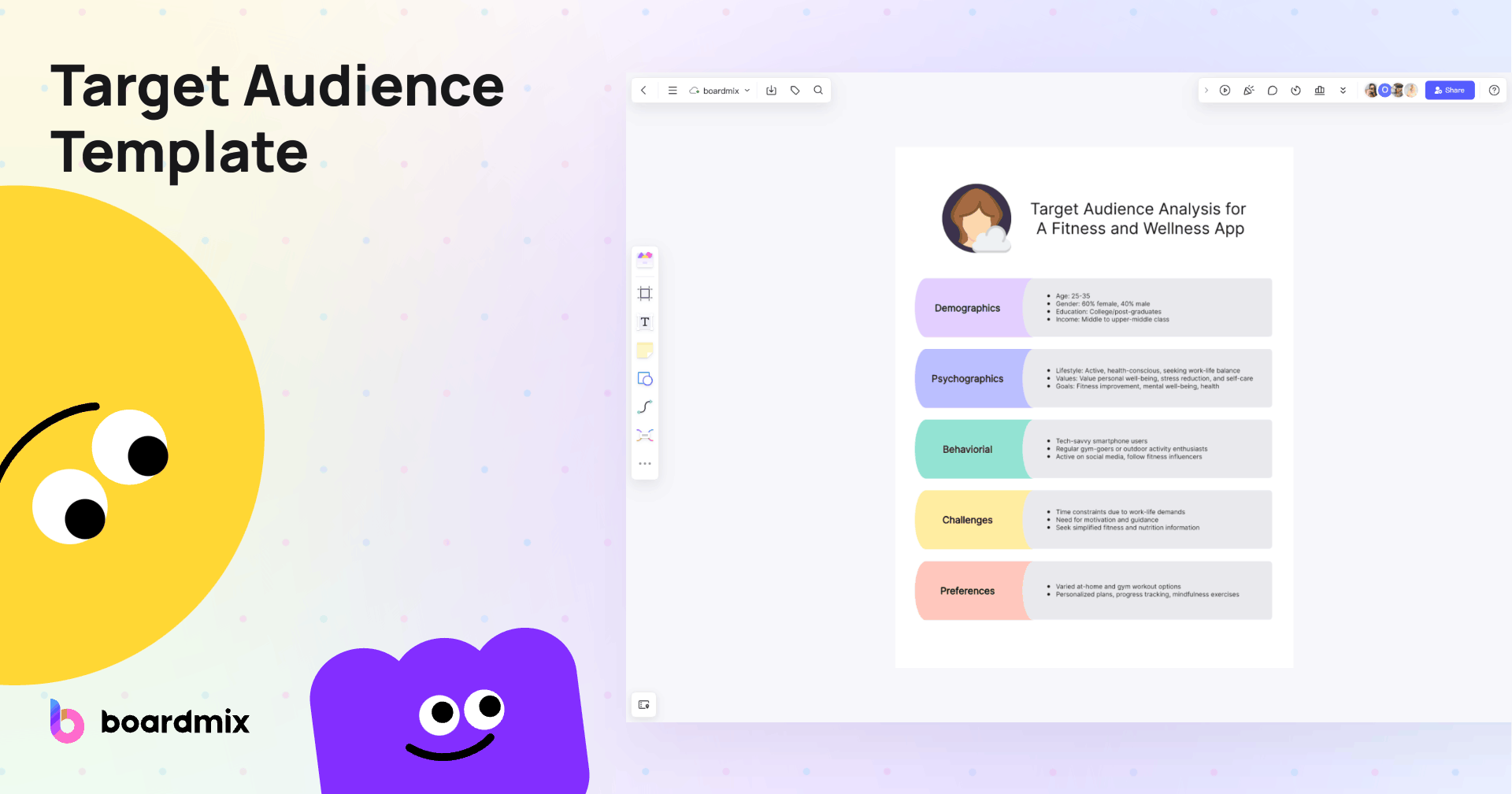In the ever-evolving landscape of business and marketing, one of the crucial factors that determine the success of any product or service is the ability to identify and connect with the target audience. The term "target audience" refers to a specific group of people that a business aims to reach with its marketing efforts. Understanding and effectively engaging with this audience can significantly impact a company's bottom line and overall success.

Part 1. What is the Target Audience?
Before delving into the strategies for connecting with a target audience, it's essential to define who they are. The target audience is not a one-size-fits-all concept; rather, it involves a detailed analysis of demographics, psychographics, and behavioral patterns. Demographics encompass factors such as age, gender, location, income, and education level, while psychographics delve into interests, values, and lifestyles. The combination of these elements helps create a comprehensive picture of the ideal customer.
Part 2. The Importance of Identifying the Target Audience
Identifying the target audience is crucial for several reasons, and it plays a significant role in the success of marketing, communication, and business strategies. Here are some key reasons why identifying the target audience is important:
Relevance and Personalization: Knowing your target audience allows you to tailor your messages, products, or services to be more relevant to their needs, interests, and preferences. This personalization increases the chances of capturing their attention and resonating with them.
Efficient Resource Allocation: Understanding your target audience helps optimize the allocation of resources, such as marketing budgets. By focusing efforts on the specific demographics and channels most likely to reach your audience, you can maximize the impact of your campaigns.
Effective Communication: Different demographics may respond differently to various communication styles and channels. Identifying your target audience enables you to choose the most effective communication platforms and tailor your messages to be more compelling and persuasive.
Product Development: When creating products or services, knowing your target audience helps in designing features and functionalities that meet their specific needs and preferences. This customer-centric approach increases the likelihood of product success in the market.
Brand Loyalty: Building a loyal customer base is essential for long-term success. By catering to the preferences of your target audience, you can foster a sense of connection and loyalty among your customers, encouraging repeat business and positive word-of-mouth.
Market Segmentation: Identifying a target audience often involves breaking down the market into segments based on demographics, psychographics, and behaviors. This segmentation allows for a more nuanced understanding of different customer groups, enabling more effective targeting and strategy development.
Competitive Advantage: Understanding your target audience better than your competitors can provide a competitive advantage. By delivering a more tailored and relevant experience, you can stand out in the market and attract customers away from competitors.
Measurable Success: Clearly defined target audience criteria enable you to set measurable goals and track the success of your marketing and business strategies. This data-driven approach allows for continuous improvement and adaptation based on real-time feedback.
In summary, identifying the target audience is fundamental for businesses and individuals looking to effectively reach, engage, and serve the right people. It enhances the efficiency of marketing efforts, improves customer satisfaction, and contributes to overall business success.
Part 3. Types of Target Audience
Target audiences can be categorized into various types based on different criteria such as demographics, psychographics, behaviors, and preferences. Here are some common types of target audiences:
Demographic Segmentation:
- Age: Children, teenagers, young adults, middle-aged, or seniors.
- Gender: Male, female, or non-binary.
- Income Level: Low-income, middle-income, high-income.
- Education Level: High school graduates, college students, and postgraduates.
Geographic Segmentation:
- Location: Urban, suburban, rural, regional, national, or international.
- Climate: Regions with specific climate conditions.
Psychographic Segmentation:
- Lifestyle: Health-conscious, tech-savvy, outdoors enthusiasts, etc.
- Interests: Hobbies, entertainment preferences, sports.
- Values: Environmental consciousness, social responsibility, etc.
- Personality Traits: Introverted, extroverted, adventurous, conservative.
Behavioral Segmentation:
- Usage Patterns: Heavy users, moderate users, occasional users.
- Brand Loyalty: Brand-loyal customers, switchers, and price-sensitive buyers.
- Purchase Occasions: Regular purchases, special occasions.
- Product Benefits: Quality-conscious, price-sensitive, convenience-focused.
Technographic Segmentation:
- Technology Adoption: Early adopters, mainstream adopters, laggards.
- Device Preferences: Mobile users, desktop users, etc.
Cultural Segmentation:
- Cultural Background: Ethnic groups, cultural values, language preferences.
- Religious Affiliation: Targeting specific religious communities.
B2B Segmentation:
- Industry: Targeting specific industries or sectors.
- Company Size: Small businesses, medium-sized enterprises, large corporations.
- Job Titles: CEOs, managers, IT professionals.
Generational Segmentation:
- Generation Z: Born after the mid-1990s to early 2010s.
- Millennials: Born between the early 1980s and mid-1990s.
- Generation X: Born between the mid-1960s and early 1980s.
- Baby Boomers: Born after World War II, roughly between 1946 and 1964.
Targeting by Relationship Status:
- Single, Married, Divorced, Widowed: Targeting based on relationship status.
Ethical and Environmental Segmentation:
- Eco-conscious Consumers: Targeting those who prioritize environmentally friendly products.
- Ethical Consumers: Appealing to consumers with strong ethical values.
These are just a few examples, and in practice, target audiences can be a combination of several criteria. Effective targeting involves a deep understanding of your specific audience and tailoring marketing efforts accordingly.
Part 4. How to Define Your Target Audience
Defining your target audience is a critical step in creating effective marketing strategies and communications. Here are steps you can take to define your target audience:
Conduct Market Research:
- Start by conducting thorough market research to understand the broader industry, market trends, and competitor landscape.
- Gather data on customer demographics, behaviors, preferences, and needs.
Analyze Current Customers:
- If you already have existing customers, analyze their characteristics. Look at demographics, psychographics, and purchasing behaviors.
- Identify common traits among your most valuable and loyal customers.
Create Customer Personas:
- Develop detailed customer personas representing your ideal customers. Include information such as age, gender, occupation, interests, challenges, and goals.
- Personas can help humanize your target audience and guide your marketing efforts.
Identify Pain Points and Needs:
- Understand the pain points and needs of your potential customers. What problems are they trying to solve? What solutions are they seeking?
- Tailor your products or services to address these specific pain points.
Utilize Demographic Information:
- Consider demographic factors such as age, gender, income, education, and geographic location.
- Analyze how these factors may influence your customers' preferences and behaviors.
Explore Psychographic Factors:
- Examine psychographic elements such as lifestyle, values, interests, and attitudes.
- Understand what motivates your audience and how they spend their time.
Evaluate Behavioral Patterns:
- Analyze your audience's buying behavior, usage patterns, and brand loyalty.
- Determine the factors that influence their decision-making process.
Consider Technographic Factors:
- For digital products or services, consider the technographic profile of your audience. This includes their use of technology, preferred devices, and online habits.
Segmentation:
- Segment your audience based on common characteristics. This could involve creating different personas for distinct segments.
- Recognize that different segments may require unique marketing approaches.
Feedback and Surveys:
- Collect feedback from current customers through surveys or direct communication.
- Ask about their experiences, preferences, and what they value in products or services.
Stay Agile and Iterate:
- Be open to refining your target audience definition as your business evolves.
- Regularly revisit and update your understanding of your audience based on new data and market changes.
Test and Validate:
- Test your assumptions by running small-scale campaigns or surveys to validate your understanding of the target audience.
- Use the results to refine and optimize your targeting strategies.
By going through these steps, you'll be better equipped to define a clear and specific target audience. Keep in mind that your target audience may evolve, so it's essential to stay attuned to market changes and be willing to adapt your strategies accordingly.
Part 5. Target Audience Template
Boardmix is designed to cater to a wide range of audiences, from educators and students who need a collaborative space for learning, to business professionals seeking an efficient tool for brainstorming sessions, project planning, or team collaboration. Our extensive library of templates makes it easy for users to get started. Whether you're mapping out a complex project timeline, creating an interactive lesson plan, or organizing your thoughts with mind maps, Boardmix has a template that fits your needs. The intuitive interface and user-friendly design make it accessible even to those who are not tech-savvy.

Key features of Boardmix
Collaborative Workspace: Boardmix provides a real-time, interactive workspace where multiple users can collaborate simultaneously, making it ideal for team brainstorming sessions or group projects.
Extensive Template Library: With a wide range of pre-designed templates, Boardmix makes it easy to start any project, whether it's a business strategy map, an educational lesson plan, or a creative mind map.
User-friendly Interface: The intuitive design and simple navigation of Boardmix make it accessible to users of all tech levels.
Real-time Syncing: Changes made on Boardmix are instantly visible to all participants, ensuring everyone is always on the same page.
Cross-platform Accessibility: Whether you're using a desktop, laptop, tablet or mobile device, you can access and use Boardmix seamlessly.
Conclusion
In a competitive market, understanding and connecting with the target audience is a strategic imperative for businesses. By defining the demographics, psychographics, and behaviors of their ideal customers, companies can tailor their communication, optimize resources, and build lasting relationships. In the dynamic landscape of marketing, the ability to resonate with a specific audience is a powerful tool that can drive success and sustainable growth.
Discover a new way of collaboration with Boardmix, the online whiteboard designed to bring your ideas to life. With our extensive library of templates and user-friendly interface, you can easily map out projects, brainstorm ideas, or conduct interactive lessons. Don't wait any longer - start enhancing your team's productivity and creativity with Boardmix today!













